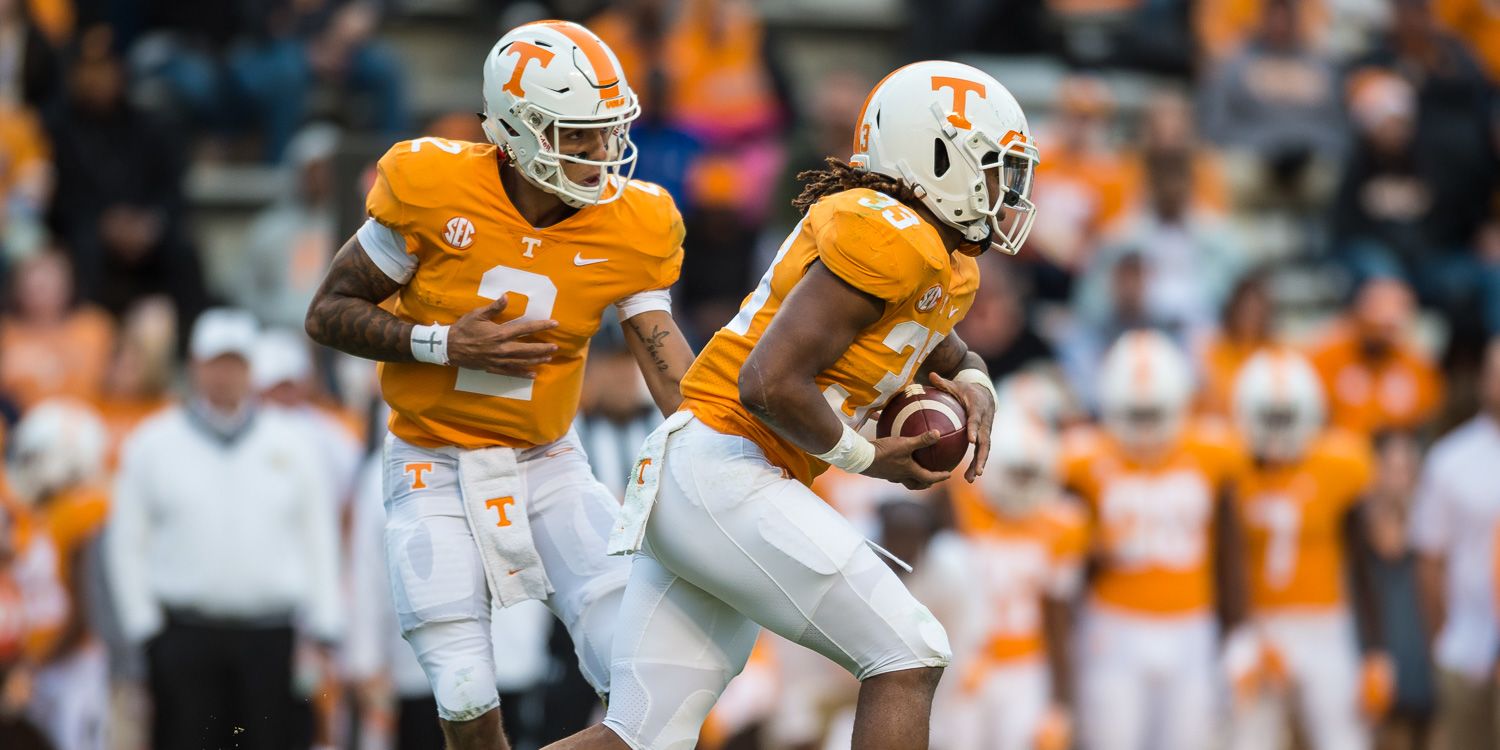Not everything is the best or worst you’ve ever seen, though it may feel like it in the moment. Such was the case for portions of the day against Charlotte, when the Vols ran it 26 times for 20 yards against a Conference USA opponent and scored only a single offensive touchdown. It wasn’t good at 4.09 yards per play, Tennessee’s lowest output of the season. But per play, it was better than three games from last season, including both the obvious (Georgia and Alabama) and the similar (Southern Miss, 3.56 in victory). On the year Tennessee averages 5.35 yards per play, a significant improvement on the 4.77 from last year. The running game yesterday certainly didn’t fit the “competent, not excellent” theme the Vols have been building from after last year, but both the result and the other phases of the game were acceptable.
At the end of this year, when the offense’s total yards are held against them (currently 333 per game, 313 against power five competition), one thing to keep in mind: Tennessee is playing at a much slower pace than in most of the last ten years. The Vols ran just 47 plays yesterday, the second time this year (46 at Georgia) we’ve been under 50 offensive snaps.
Tennessee averages 62.2 plays per game. The Vols were actually a tick slower last year at 61 plays per game. But in time of possession, you can see a significant difference between 2017 and 2018:
| Year | Plays | YPP | TOP |
| 2018 | 62.2 | 5.35 | 31:09 |
| 2017 | 61 | 4.77 | 28:14 |
| 2016 | 68.9 | 6.44 | 27:24 |
| 2015 | 76 | 5.56 | 30:32 |
| 2014 | 75.2 | 4.93 | 30:14 |
| 2013 | 67 | 5.27 | 28:49 |
| 2012 | 74.2 | 6.42 | 26:58 |
| 2011 | 66 | 5.04 | 30:45 |
| 2010 | 63.6 | 5.72 | 28:52 |
| 2009 | 67.5 | 5.69 | 30:24 |
(Stats via Sports Source Analytics)
Last year the Vols ran essentially the same number of plays, but took almost three fewer minutes off the clock at a difference of nearly half a yard less per snap. There are several key differences from last year: one is third down conversions, the lifeblood of Tennessee’s offense. The Vols are converting 41.13% in 2018, 50th nationally, and have picked up 37 first downs through the air on third down, 11th nationally. Last year Tennessee converted just 30.67% of their third downs overall, 120th nationally.
How else are the Vols staying on the field? Take away the Florida game, and how many turnovers do you remember?
For the record: two against UTEP, the late fumble against Georgia, and the sack-fumble of Guarantano early in the Alabama game. Six against the Gators still stings, but the Vols have turned it over just four times in the other eight games. Last year, by contrast, the Vols had 18 turnovers in 12 games.
The narrative of Tennessee’s season will essentially be written by what they do in the next three games, and whether they can find two wins to get bowl eligible. But there’s enough data to this point to begin to establish Tennessee’s identity. The Vols continue to run on first down, even though they’re not very good at it (4.05 yards per carry, 101st nationally). Tennessee’s 69 passing attempts on first down rank 119th nationally, despite playing from behind so often in four of the five losses.
Part of me still believes the Vols are running it so often on first down to protect their defense: keep the clock moving, limit opportunities, etc. Tennessee is also snapping it deeper into the play clock than at any point under Butch Jones.
The real question here is how we’ll see the Vols open things up not just in the next three weeks, but next season when, in theory, all of the skill players could return along with Guarantano. Maybe the most surprising number of all: Guarantano’s 8.1 yards per attempt are on par with the best numbers of the post-Fulmer era (8.3 for Dobbs in 2016 and Tyler Bray’s last five games in 2010, 8.0 for Bray in 2011 and 2012). The Vols appear more than capable in the passing game, but remain deliberate in their commitment to the ground game, even when it’s not working well. Again, I have to believe this is in part to protect their defense.
So what now? The offensive staff put together a different, effective gameplan at South Carolina. Needing two wins in three games to get home, will we see more passing attempts? Will that lead to opposing offenses taking advantage of more shots against Tennessee’s defense? Tennessee’s plan beat Auburn and gave itself a chance against South Carolina. Is there anything left up the offense’s sleeve?
